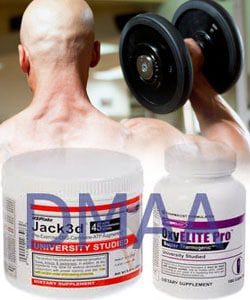
A new study is again casting doubt on claims that DMAA (1,3-dimethylamylamine), an ingredient used in popular weight loss and body building supplements, is a naturally-occurring substance found in geraniums. According to the authors of the study, published in the journal Drug Testing and Analysis, their findings indicate that the DMAA used in dietary supplements […]
 A new study is again casting doubt on claims that DMAA (1,3-dimethylamylamine), an ingredient used in popular weight loss and body building supplements, is a naturally-occurring substance found in geraniums. According to the authors of the study, published in the journal Drug Testing and Analysis, their findings indicate that the DMAA used in dietary supplements could not have originated from the geranium plant.
A new study is again casting doubt on claims that DMAA (1,3-dimethylamylamine), an ingredient used in popular weight loss and body building supplements, is a naturally-occurring substance found in geraniums. According to the authors of the study, published in the journal Drug Testing and Analysis, their findings indicate that the DMAA used in dietary supplements could not have originated from the geranium plant.
DMAA was originally developed as a nasal decongestant, but is now used as an ingredient in “workout boosters” sold under brand names like Lean Efx, Napalm, Nitric Blast and Jack3D. Some supplement makers have claimed that DMAA is a “natural stimulant” derived from geranium extract, but a number of recent studies have failed to show that is the case. In January, the American Herbal Products Association (AHPA), the only national trade association that is focused on herbs and herbal products, informed its members that DMAA should not be labeled as a product of geranium oil.
Late last year, the U.S. Army pulled DMAA supplements from its commissaries after the sudden deaths of several soldiers were tied to the product. Then in late April, the U.S. Food & Drug Administration (FDA) issued warning letters to 10 DMAA supplement makers, alleging sale of the chemical is illegal, as there was no evidence that DMAA deserved to be classified as a dietary supplement.
For this new study, researchers at the University of Texas at Arlington examined eight different geranium extracts of different geographical origins. No DMAA was found in any of the geranium extracts. Results showed that DMAA actually consists of 4 different compounds called stereoisomers and that the unique isomeric ratios in synthetic DMAA were the same as those found for the DMAA in all supplements. Thus, the DMAA in supplements could not have originated from the geranium plant.
“The FDA should regulate and/or ban products in which significant amounts of synthetic pharmacological compounds are added,” Daniel W. Armstrong, Ph.D. “Also, this information should be clearly labeled — including their effects and possible side effects — so that consumers can make an informed choice.”


